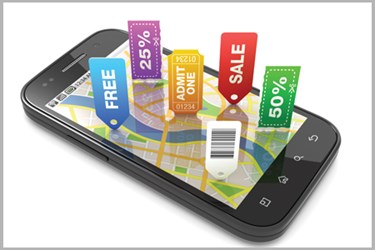Retail Mobile Strategy: Points Of Customer Engagement And Solutions That Work


Your merchant IT clients are trying to keep up with ways their customers want to engage with them and to leverage tools they need to stay competitive. You can provide both.
Matt Pillar, editor-in-chief at Integrated Solutions for Retailers, addressing retailers, says, “Your customers aren’t just accepting the role their smartphones are playing in the shopping experience; they’re also pushing you to engage their smartphones, forcing adoption of digital wallet acceptance, mobile loyalty programs, and more.”
In his article, Pillar lists solutions your merchant IT clients can use at points of customer engagement to leverage mobile trends:
- 2D bar codes on packaging can link consumers to product information.
- 2D bar codes on shelf labels can provide product information or suggest complementary products.
- Technology that accepts mobile wallet payments allows consumers to pay using credit card data on their cellphones.
- Loyalty club members can be identified by 2D bar code or via NFC (near field communication) on their smartphones, so customers don’t have to carry physical loyalty cards.
- Customers can scan products and add them to their carts making self-checkout (SCO) quicker.
- Retailers can use beacons to deliver offers to shoppers’ smartphones when they are near the promoted merchandise or in a certain department of the store.
- Retailers can provide a store map to consumers’ smartphones, which can include special offers or search functionality.
Pillar says to engage customers beyond visits to their brick-and-mortar stores, your merchant IT customers can consider adding these features to their mobile strategies: a mobile-optimized website, a store locator, digital coupons and advertising, and mobile e-commerce.
He also lists components of infrastructure that are necessary to support many retailers’ mobile strategies:
- Bar codes, printed on products, shelves, and displays, or in digital form on displays. They can also be sent to smartphones for scanning at the point of sale (POS)
- RFID tags and RFID readers or NFC (near field communications) capability to decode the information on the tag.
- Bluetooth, which enables M2M (machine-to-machine) communication among devices in close proximity to one another, and to deliver promotions to consumer devices, along with delivery via Wi-Fi and Internet access.
- Location-based services, using GPS or other technology to locate shoppers.
- SMS for text messaging between mobile phones and MMS, which enables multimedia content sent between phones.
In a BSM webinar, Randy Roe, founder and president of IT solutions provider Retail Technology Services in Seattle, WA, advises retail VARs to ask directed questions about your clients’ objectives to provide the optimal customer experience — and how technology can support that. The benefit of that conversation will be “a much more meaningful solution,” says Roe.
